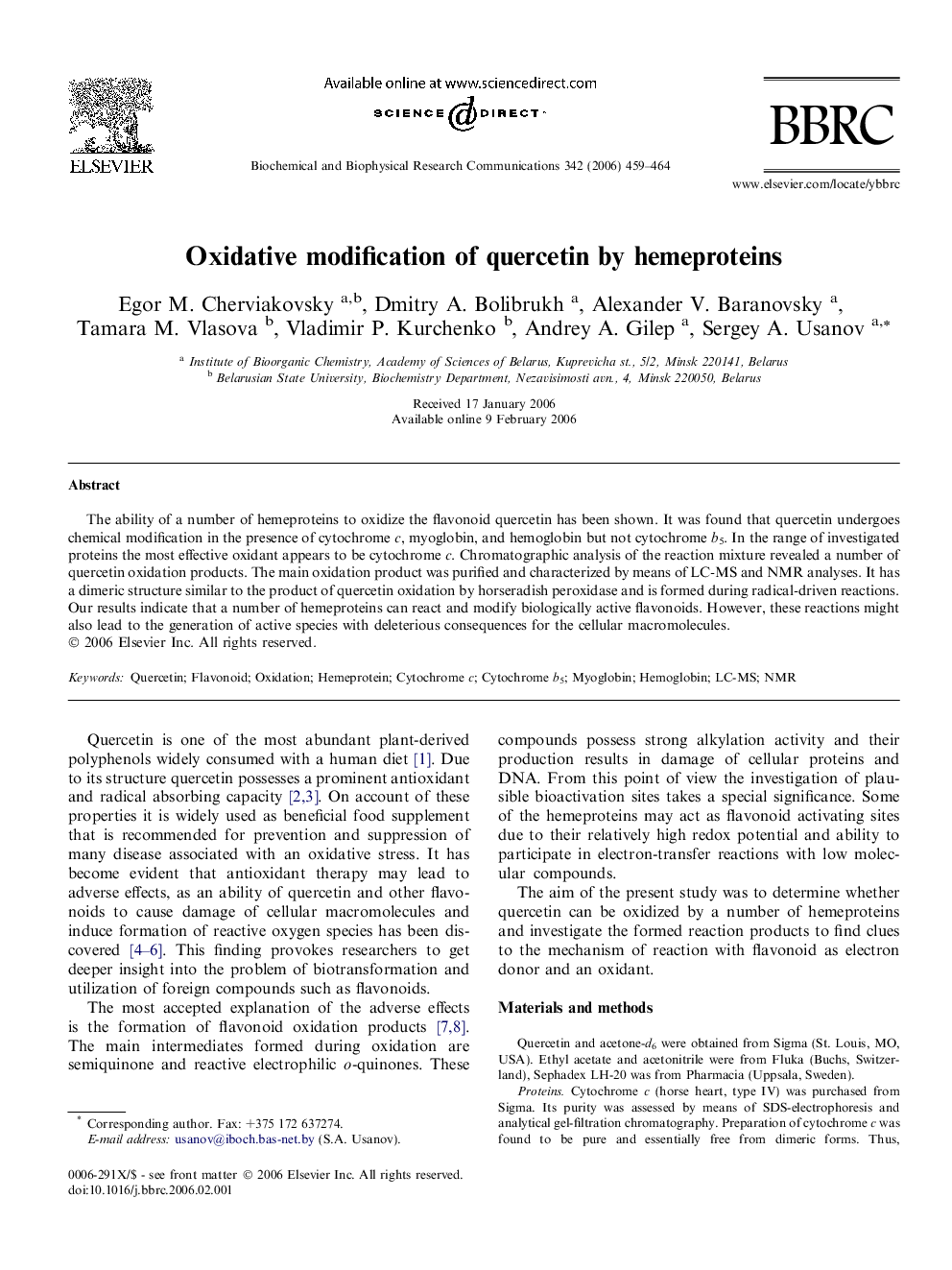| Article ID | Journal | Published Year | Pages | File Type |
|---|---|---|---|---|
| 1939959 | Biochemical and Biophysical Research Communications | 2006 | 6 Pages |
The ability of a number of hemeproteins to oxidize the flavonoid quercetin has been shown. It was found that quercetin undergoes chemical modification in the presence of cytochrome c, myoglobin, and hemoglobin but not cytochrome b5. In the range of investigated proteins the most effective oxidant appears to be cytochrome c. Chromatographic analysis of the reaction mixture revealed a number of quercetin oxidation products. The main oxidation product was purified and characterized by means of LC-MS and NMR analyses. It has a dimeric structure similar to the product of quercetin oxidation by horseradish peroxidase and is formed during radical-driven reactions. Our results indicate that a number of hemeproteins can react and modify biologically active flavonoids. However, these reactions might also lead to the generation of active species with deleterious consequences for the cellular macromolecules.
